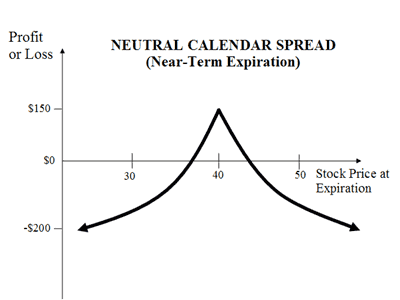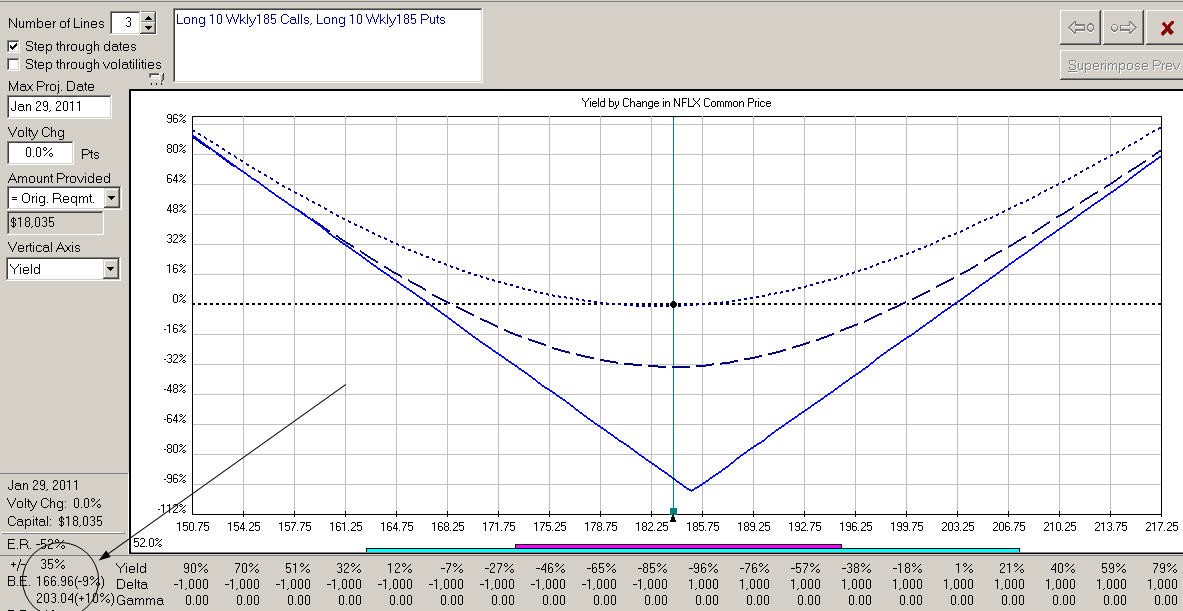Buying Calendar Spreads with Weekly Options
Post on: 4 Июль, 2015 No Comment

We have a portfolio called the Last Minute portfolio. It remains in cash all week until Thursday near the close when we have to make a decision. Do we expect that SPY will fluctuate by more than a dollar, or less that a dollar on the next day.
If we think it will fluctuate less than a dollar, the best move is to buy calendar spreads, buying options with 8 days of remaining life and selling options that will expire the very next day. These spreads are designed to make money if the stock (SPY) changes by less than a dollar on Friday.
On Thursdays which precede the government monthly job reports, or when the stock option for that week has been unusually volatile, a different strategy is employed. Rather than betting that SPY will fluctuate by less than a dollar, we buy either a straddle or strangle that will most likely make money if SPY moves by more than a dollar on Friday.
Last week, there was no economic news coming out on Friday that might spook the market, but SPY had fluctuated by more than a dollar in three of the first four days that week. This would suggest that the best bet would to buy a strangle or straddle, but we did not feel too confident that the high volatility would continue, and since there is a higher risk involved in the straddle-strangle alternative, we decided to stick with calendar spreads.
With about 15 minutes of trading left on Thursday, SPY was trading at $131.10 and we bought 40 Jul4-11 Jul-11 131 put calendar spreads, paying $.87 per spread. The stock immediately fell $.30 and we bought an additional 20 identical spreads at the 130 strike, paying $,85 for these as well. In a back test study we had learned that if a big move took place on Friday, three out of four times it was on the downside, so our initial positions should usually be set up to be bearish.
Our starting positions were heavily skewed to the downside. We could handle a $1.25 move in that direction but only a $.75 move to the upside. The actual upward move of $.76 for the day should have resulted in a break-even at best.

When the market opened up about $.40, our short position became quite uncomfortable. Shortly after the open, we were lucky enough to close out the 130 calendar spread for $.05 more than we paid for it, exactly enough to cover commissions and break even. Later in the day when SPY had fallen to near $131, we sold half our 131 spreads for $1.12, a nice premium on the $.87 cost (we gained $20 per spread after commissions, or $400 on a $1740 investment).
We were hoping that the stock would close out the day very near the current price and we would make a huge gain. We werent so lucky as the stock shot suddenly higher in the last half hour of trading, and we closed out the remaining spreads for $1.05 for a $14.75 gain per spread after commissions (we bought back the expiring 131 calls for $.02, avoiding the commission).
Bottom line, we were quite pleased with a 13.3% gain after commissions for the day on our capital at risk when the stock did not move in the direction we were hoping. Over the last two weeks, the Last Minute portfolio has gained $2059 on an average investment of $3630 (56%). How many stock investments do you suppose did this well?














